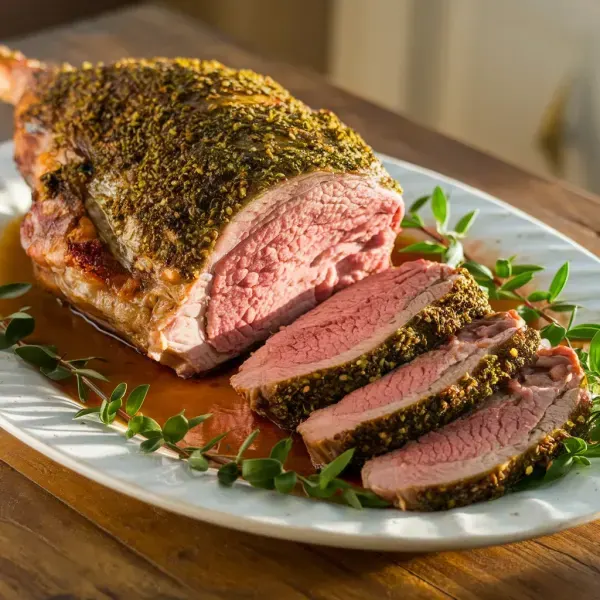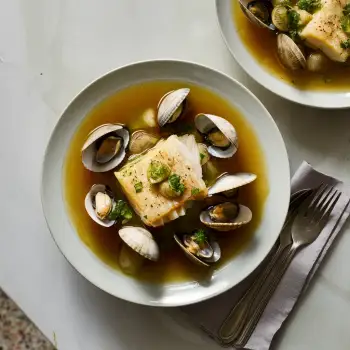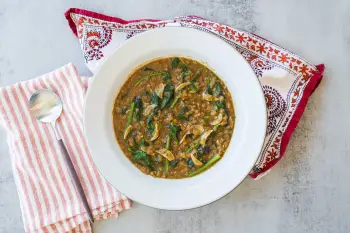
 1520 minutes
1520 minutesA perfectly seasoned and flavorful roast leg of lamb with a beautiful herb crust.


Leg Of Lamb, Bone-In, Trimmed
0 lb
to taste
to taste
1. Season the Lamb
A day or two before you plan to roast the lamb, start by trimming any excess fat from the leg of lamb. Once trimmed, season the lamb generously with salt and fresh-ground black pepper. If your lamb is boned or partially boned, tie it with cotton string to keep it in a compact shape. Place the lamb in the refrigerator for 1-2 days.
2. Prepare the Lamb for Roasting
On the day of cooking, take the lamb out of the refrigerator at least 2 hours before you plan to start roasting. This will allow the meat to come to room temperature. Place the lamb in a roasting pan and preheat your oven to 375°F.
3. Initial Roasting Phase
Once the oven is preheated, put the roasting pan in and let the lamb roast for 30 minutes. This initial high-heat cooking develops a flavorful, golden-brown crust.
4. Turn and Continue Roasting
After 30 minutes, turn the lamb to allow for even browning and roast for another 20 minutes.
5. Final Roasting and Temperature Check
Turn the lamb again and continue roasting. Start checking the internal temperature after 45 minutes using an instant-read thermometer. You're looking for an internal temperature of 128°F for a medium-rare finish.
6. Rest the Lamb
When the lamb reaches the desired temperature, remove it from the oven and let it rest in a warm place for about 20 minutes.
7. Carve and Serve
Finally, carve the lamb using a thin-bladed sharp knife. Keep the roast warm by tenting it loosely with foil.
This is a smaller and more elegant variation. The cooking time will be shorter, and the presentation can be more refined. A mustard-based crust could provide a piquant contrast to the rich lamb.
Swap the leg of lamb for a beef roast, such as a rib roast or tenderloin. Adjust the cooking time according to the size and preferred doneness of the beef. You can also swap the herbs for a more traditional beef pairing, like a horseradish crust.
The most straightforward variation is to use a different mix of herbs. If you commonly use rosemary and thyme, try incorporating oregano, marjoram, or savory for a Mediterranean twist, or mint for a more traditional lamb pairing. You can also add fresh parsley or cilantro for a fresh, green note.
Use a pork loin and consider using sage in your herb mix to complement the pork's flavor. Applesauce or a fruit chutney can be served as a side to enhance the dish's sweetness and acidity.
For a quicker-cooking protein, you can apply a lighter herb crust to fish fillets. Since fish cooks much faster, this would require a shorter roasting time at a higher temperature to prevent drying out the fish.




Comments (0)